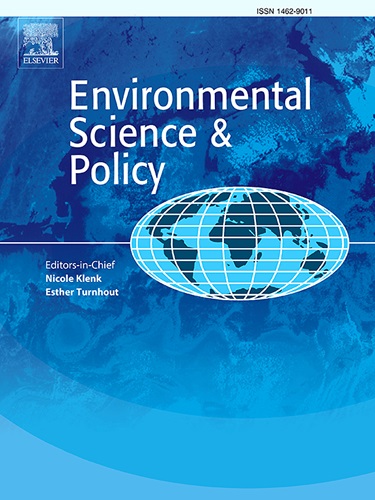Strategic retreat: Balancing risk and societal goals in land-use planning
IF 4.9
2区 环境科学与生态学
Q1 ENVIRONMENTAL SCIENCES
引用次数: 0
Abstract
Many communities worldwide are retreating or preparing to retreat from hazardous areas due to climate change, but where they should relocate to needs careful consideration. The focus to date of “managed retreat,” has been on reducing detrimental and undesirable consequences. However, relocation also presents opportunities. Managing retreat should account not only for where people should be moved from but also where they could be moved to, in order to leverage the potential co-benefits and minimise the associated trade-offs. In this research article, we apply a multi-objective spatial optimisation methodology to Christchurch, New Zealand, to address these key research gaps. Our results demonstrate the trade-offs of various retreat strategies, illustrating the risks of pursuing myopic strategies. For instance, we show that a narrow coastal-retreat focus could lead to less accessibility to infrastructure than a more holistic retreat plan and, in fact, be in direct conflict with district zoning plans. However, too much focus on optimising accessibility leaves communities exposed to hazards. Our spatial optimisation approach highlights places for the government to prioritise development while managing retreat and establishes a fundamental tool for stakeholder engagement. Through this process, we present a way for communities to leverage synergistic opportunities for achieving adaptation, sustainability, and access for people, among the other, wide-ranging values of communities. The results make it clear that managed retreat planning needs to actively engage with the complexity of balancing risk exposure with wider societal goals.
由于气候变化,世界上许多社区正在撤离或准备撤离危险地区,但他们应该搬迁到哪里需要仔细考虑。到目前为止,“有管理的撤退”的重点是减少有害的和不希望的后果。然而,搬迁也带来了机遇。管理撤退不仅要考虑到人们应该从哪里搬迁,还要考虑到他们可以搬到哪里去,以便充分利用潜在的共同利益,并最大限度地减少相关的权衡。在这篇研究文章中,我们将多目标空间优化方法应用于新西兰基督城,以解决这些关键的研究空白。我们的研究结果显示了各种撤退策略的权衡,说明了追求短视策略的风险。例如,我们表明,与更全面的撤退计划相比,狭隘的沿海撤退计划可能导致更少的基础设施可及性,事实上,与地区分区计划直接冲突。然而,过于注重优化可达性会使社区暴露于危险之中。我们的空间优化方法突出了政府优先发展的地方,同时管理撤退,并建立了利益相关者参与的基本工具。通过这一过程,我们为社区提供了一种利用协同机会实现适应性、可持续性和人们可及性的方式,以及社区的其他广泛价值。结果清楚地表明,管理撤退计划需要积极参与平衡风险暴露与更广泛的社会目标的复杂性。
本文章由计算机程序翻译,如有差异,请以英文原文为准。
求助全文
约1分钟内获得全文
求助全文
来源期刊

Environmental Science & Policy
环境科学-环境科学
CiteScore
10.90
自引率
8.30%
发文量
332
审稿时长
68 days
期刊介绍:
Environmental Science & Policy promotes communication among government, business and industry, academia, and non-governmental organisations who are instrumental in the solution of environmental problems. It also seeks to advance interdisciplinary research of policy relevance on environmental issues such as climate change, biodiversity, environmental pollution and wastes, renewable and non-renewable natural resources, sustainability, and the interactions among these issues. The journal emphasises the linkages between these environmental issues and social and economic issues such as production, transport, consumption, growth, demographic changes, well-being, and health. However, the subject coverage will not be restricted to these issues and the introduction of new dimensions will be encouraged.
 求助内容:
求助内容: 应助结果提醒方式:
应助结果提醒方式:


